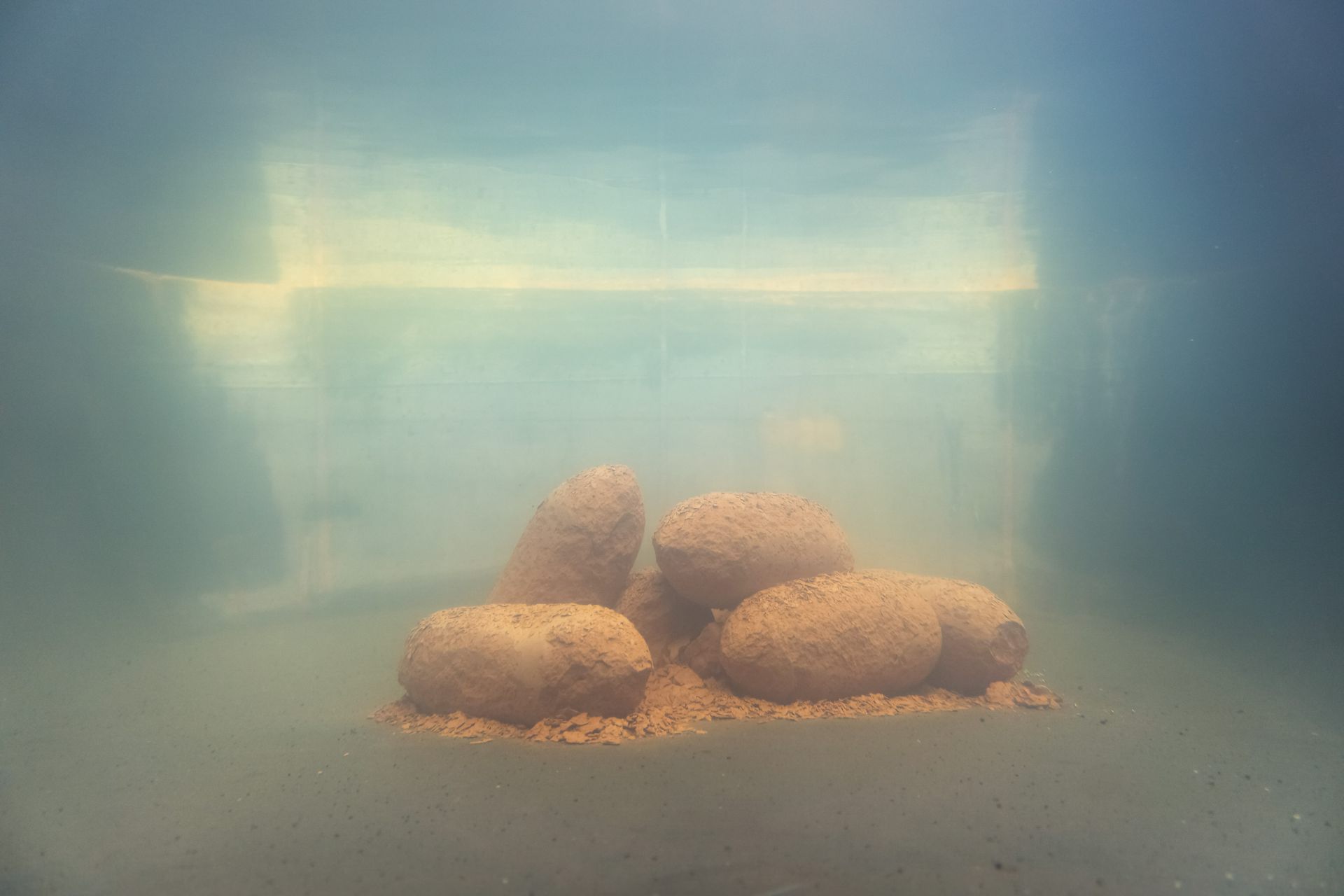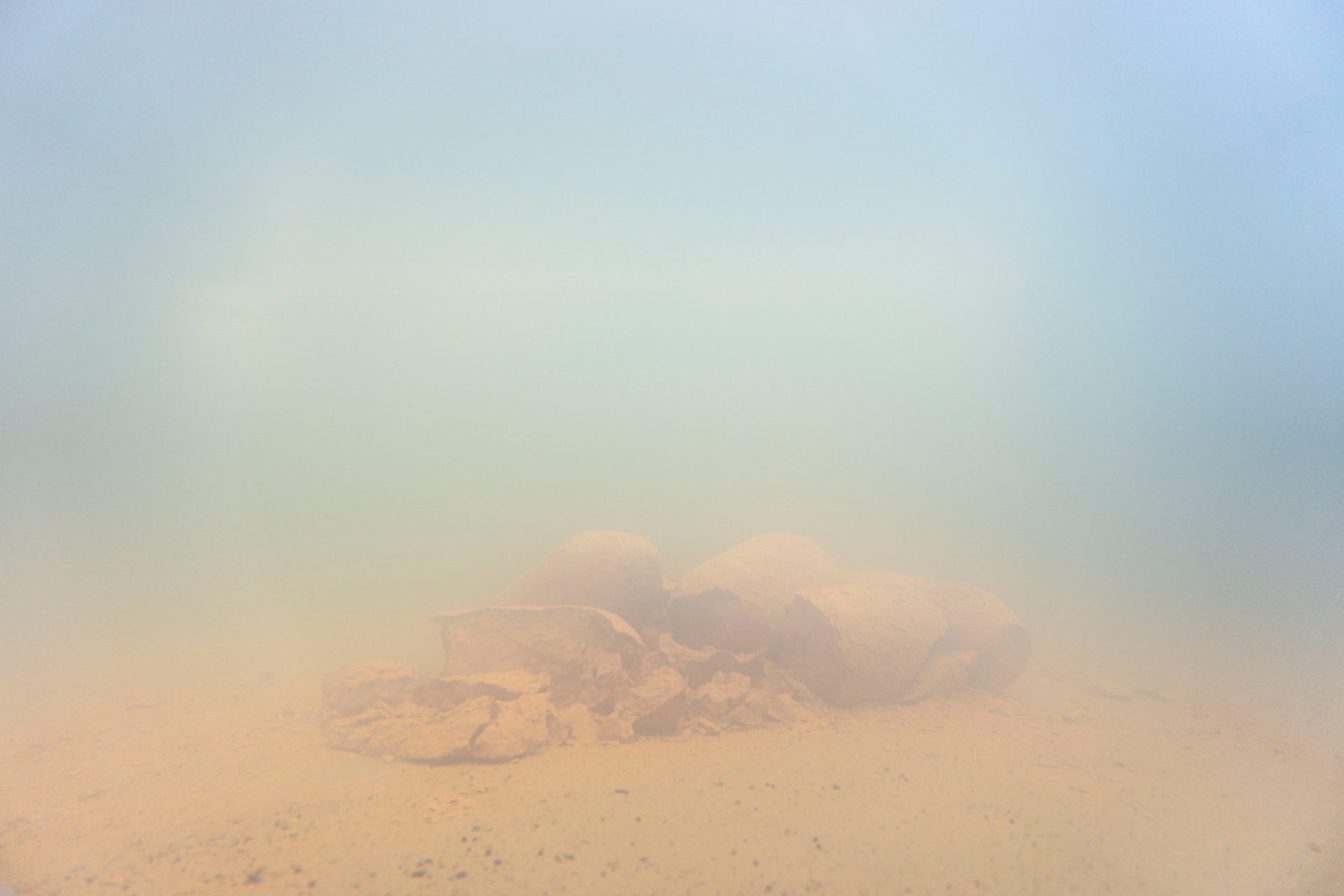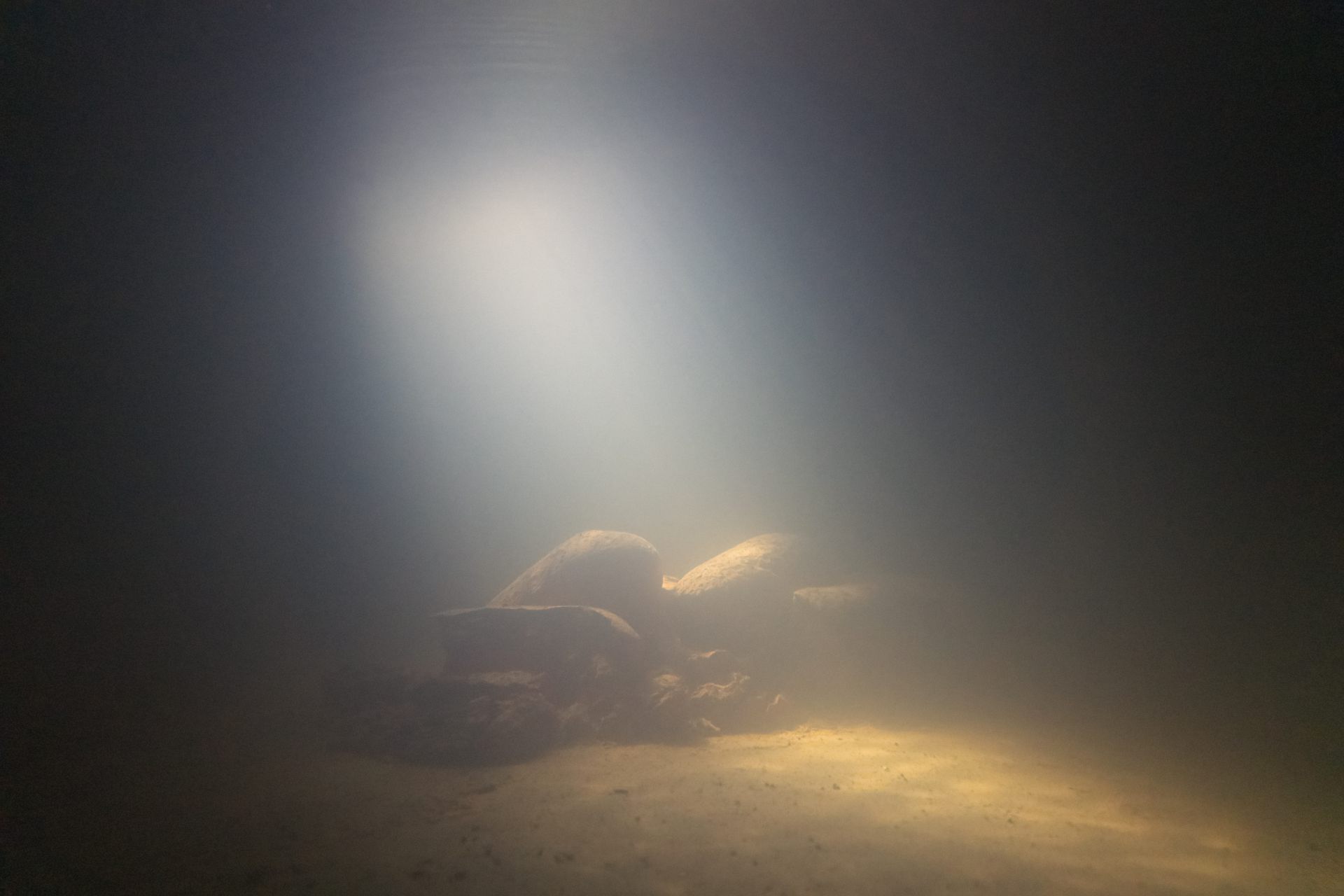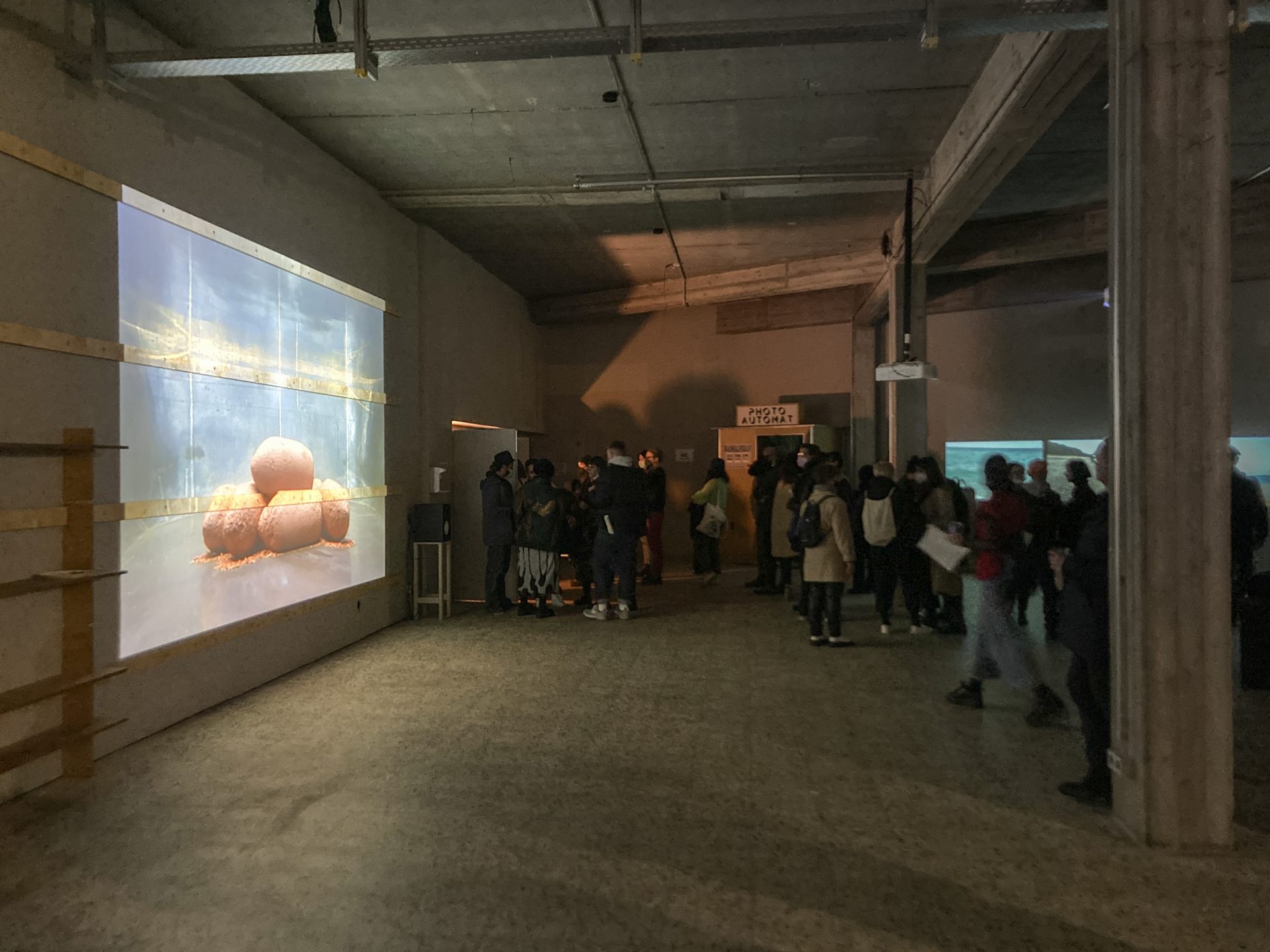In 2020, an estimated 1.3 million tons of munitions were resting in the North and Baltic Seas, intentionally deposited there 75 years ago after World War II. This legacy is exposed to a slow and steady deterioration process, leading increasingly to the release of explosives and other toxins into aquatic environments, resulting in irreversible pollution.
Something falls apart – 1 mm a decade is an artistic simulation of the slow and hidden process of underwater decay. The title refers to the average deterioration rate of bombs’ steel casings in seawater. The artwork unfolds in two complementary forms: ten photographs and a 7.5-minute stop-motion video, each capturing moments from the same quiet process of transformation over the course of 7.5 days. Both can stand alone or enter into dialogue as part of a shared installation. By compressing time, the video makes an otherwise imperceptibly slow process visible and tangible.
Through photography and video, the problem of munitions disposal is lifted from the bottom of the sea to a level where it can be collectively observed and discussed. The sounddesign is by Tim Huys and the research for this project was generously supported by Johanna Blees.
From the Series Earthly Matters:
At the height of global capitalism, we continue to consume, produce and live in a world that cannot regenerate at nearly the same speed. The body of work Earthly Matters defines our scope of action within this scenario as a space for imagination. Simone Kessler‘s current works from installations and sculptures to film, photographs and drawings. Each work is dedicated, in its way, to central questions: Which problems do we have to face today? Which other images of tomorrow are already possible? How can we think them together? To use the last words of a science fiction trilogy by Octavia E. Butler: How can we sow them into fertile soil?
Earthly Matters is a body of work since 2019



